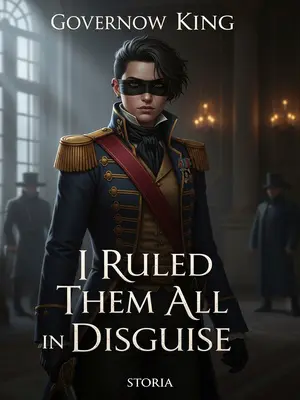Chapter 1: Lines That Never Fade
Drive down Highway 61 on a summer afternoon, and you’ll feel it—the old divide, humming beneath your tires like a half-forgotten song. Sun-baked fields stretch toward the horizon, and faded town signs mark places where history still lingers like the scent of cut grass. Even now, folks at a Fourth of July barbecue might gather under the shade of an old oak, swapping stories about ancestors who crossed the lines between North and South—grudges and all—like it was yesterday.
The Southern States and the Northern States: even the names sound like a standoff, heavy as a Civil War monument. Border crossings felt as rickety as an old wooden bridge, and neighbors eyed each other over fence posts, suspicion growing like kudzu.
The Southern States traced their roots straight back to the last gasp of the Old Republic, clinging to heritage like family Bibles locked away in courthouse safes. Up north, the new states grew out of chaos and grit, tossing aside the past for whatever would work in the wild present. The Old Republic’s memory clung to the South, like that faded photograph of great-grandpa glaring from the mantel, daring anyone to forget. Meanwhile, the North hustled forward, swapping out leaders as quickly as a poker hand.
In 1820, William Young of the Old Republic muscled his way into power, ending the old era and birthing the Southern States. It was a year of hard choices and shadowy deals—tavern meetings that stretched until sunrise, and the sound of horses galloping down muddy roads to deliver secrets. The old-timers in the South grumbled over black coffee, feeling the weight of history slam shut on their chapter.
By 1839, the Northland Union had pulled together the scattered northern territories, reuniting the land after years of division. Iron rails and telegraph wires stitched the wild stretches together, and bonfires lit the night sky as people toasted their hopes with rough whiskey, praying that unity would finally bring peace.
One in the south, one in the north—together, these rivals gave birth to the Era of the Divided States.
It’s the kind of phrase you’ll find in high school history books, nestled between sepia photos and crooked family trees. At backyard barbecues, someone might laugh, "Back then, we couldn’t even agree on what to call a sandwich," but beneath the jokes, the old pain smolders—a memory of lines drawn too deep to ever quite heal.
But these tidy labels—'Southern and Northern States'—hide a whirlwind. Inside each, governments rose and toppled with the seasons: power grabs in smoky backrooms, leaders who lasted about as long as a summer thunderstorm, and families who went from Governor’s Mansion to exile before the ink on their portraits dried. There was always a fresh scandal or new face in the capital.
The Southern States counted four names: Young, Carter, Lincoln, and Chandler. The North’s list was even longer: Northland Union, Eastern Union, Western Union, Northlake, and Northridge. Picture it like the pie contest at the county fair—each name promising a new flavor of trouble, each trying to outdo the last. Every regime meant new banners, new coins, and a whole fresh batch of promises.
To put it plain: The Southern States were like four crashing waves—Young, Carter, Lincoln, Chandler—each one washing the last off the shore. It was like hurricane season: as soon as one storm passed, another was swirling in the gulf, ready to batter the coast of power. The sand never had a chance to dry.
The Northland Union split, then splintered into Eastern and Western Unions. Those, in turn, gave way to Northlake and Northridge, before Northridge stitched things back together—only to fall to the Sutter Administration. It was like watching a river fork and braid itself, alliances and betrayals twisting the current, leaving driftwood and wreckage in their wake. Towns changed flags faster than some folks changed socks.
Finally, the mighty Sutter Administration swept the rivals away, reuniting the nation in one triumphant—and weary—moment. When Sutter’s men marched into the capital, boots polished and uniforms crisp, some cheered, others hid behind curtains, wondering if this dawn would last.
Most historians agree: the Era of the Divided States began in 1820. That date is underlined in every college history textbook—maybe even circled in red, the coffee ring from a late-night cram session still visible. 1820: the gunshot that echoed for decades.
For the first two years, the Young Administration and the Northland Union circled each other like wary boxers, fists raised but holding back. Soldiers drilled in muddy fields, but the only shots fired were at wild turkeys and deer. Border towns kept their heads down and prayed for peace.
In 1822, William Young readied a northern campaign but died before the plan could unfold. Old-timers remembered crows circling the courthouse and the river running too high—bad omens, they said. His sudden death left his allies scrambling, like someone had punched a hole in their boat right in the middle of the Mississippi.
That same year, chaos gripped the Young Administration as a succession struggle erupted. Up north, President Samuel Thompson seized his chance, marching his troops to the southern banks of the Great River.
Panic swept through the southern capital like wildfire. Wagons rolled out at dawn, some folks sharpening knives, others swearing no northerner would ever cross their river. The Great River, once just a place for fishing and steamboats, became the front line.
Samuel Thompson was a workaholic, fueling himself on black coffee and the sharp bite of tobacco. His aides joked he ran on stubbornness and caffeine—until his heart gave out at just thirty. When word of his death rippled through the Union, even his enemies paused, wondering if he’d simply given too much.
William Young’s death threw the south into chaos, but Samuel Thompson’s legacy passed smoothly to his son, Thomas Thompson.
In the stuffy halls of the northern capital, people wondered if the younger Thompson could fill his father’s boots. Newspapers ran his portrait—stern eyes, jaw set like a plow horse—and speculated about his mettle.
Thomas Thompson was sharp, skilled in both politics and war, and should have seized the moment to sweep south. But he hesitated—not for lack of nerve, but because he couldn’t. Late-night arguments echoed through brick halls, advisors urging action. Thomas paced the floor, hands clasped, weighing every risk. He knew boldness sometimes led straight to disaster.
The Northland Union’s rear was threatened by the Prairie Confederacy, who watched from the open plains with hungry eyes.
Confederacy scouts were ghosts on horseback, slipping through tall grass unseen. Around campfires, northern soldiers whispered of patrols vanishing at dawn and wild mustangs bolting for no reason at all.
In 1824, the Prairie Confederacy struck south. Spring storms raged as their banners snapped in the wind. Farmers bolted their doors, praying over their fields as the war drums echoed for miles.
Thomas Thompson led 20,000 troops north to meet them. Inexperienced but determined, he soon found himself surrounded—barely escaping with a desperate midnight charge that became legend. Some say he didn’t sleep for days, haunted by the faces of men he nearly lost.
While Thomas fought on the plains, Henry Long in the south battled through the dark corridors of political intrigue, clawing his way to the presidency in 1824. The capital was a maze of whispers and secrets. Henry moved through it like a riverboat gambler, never trusting a soul—not even the staff who poured his morning coffee.
In 1825, Thomas Thompson sent five armies north against the Confederacy. They vanished into the wind, refusing to fight head-on. The headlines celebrated victory, but the real story was in the empty plains—abandoned villages, smoldering campfires, and soldiers who returned home heroes, still listening for war drums on windy nights.
In 1829, Thomas sent an expedition nearly 1,200 miles from the capital, crushing the Confederacy with a blitz, then sweeping through the region. The Confederacy fractured, left as just a shadow. Supply wagons groaned under the weight of hardtack and ammunition, and letters home arrived weeks late, smeared with distant news. The north finally felt safe.
As Thomas fought out west, Henry Long consolidated power back home. Backed by powerful senators, he kept a low profile—until his rivals were cleared away and he seized control. But now he faced a Northland Union fresh from victory and sharpening its blades for the next campaign. Long paced the Governor’s Mansion, plotting, the tension as thick as July humidity.
In 1830, Henry Long launched a massive northern expedition. The first victories fizzled into defeat, and he slunk home in disgrace. In saloons from Memphis to Mobile, folks raised glasses in toast or derision. Cheers faded to silence as defeat set in—a cautionary tale traded over poker games on back porches.
From 1831 to 1839, major war paused. The Northland Union set about unifying the northern region, clearing out minor regimes. With the drums of war silenced, northern towns saw new schools and courthouses rise, while southern papers watched, wary. The Great River now carried grain and gossip in equal measure.
The pattern of confrontation was set—maps redrawn, families marking their loyalties in black ink. The standoff was as permanent as the split-rail fences crossing the heartland.
From 1840 to 1849, both sides quietly gathered strength. Children grew up on tales of heroes and traitors, border raids and midnight escapes. In city halls and one-room schools, people braced for the storm they knew was coming.
In 1850, the Northland Union struck first. There was no warning—just cannon fire at dawn, and telegraph wires buzzing with frantic news. Shopkeepers locked their doors, families rushed to basements as peace shattered.
Henry Long, enraged, launched the second northern campaign, roaring from the balcony of the Governor’s Mansion. "They think they can break us? Let them try!" The crowd thundered back, the city alive with the charge of war.
But the campaign was a disaster. Southern soldiers limped home in defeat, Union cavalry watered their horses in the Mississippi, and Jackson, the southern capital, lay trembling at the edge of conquest.
After the rout, blame flew in every direction. The Governor’s Mansion became a house of suspicion—knives eyed too long, dinners tense. Even Vice President Charles Shaw—Henry Long’s son—plotted to kill him.
Henry was heartbroken and furious. He’d once bounced Charles on his knee, now he watched the boy pace with restless energy. Sometimes, late at night, Henry wondered if there was a moment he could have changed it all—just one more story, one more hug.
Henry Long was on edge; Thomas Thompson was, too. In both capitals, the air felt thick as a storm about to break. Papers speculated wildly, each headline breathless.
Though the Northland Union won the second round, the cost was steep. Northern mothers hung black wreaths on their doors, and church bells rang with a somber note. Parades tried to cover the grief with bunting, but everyone knew the price.













